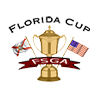Written by: Darin Green, Senior Director, Rules and Competitions

Patrick Reed’s approach shot on the 10th hole sailed into some deep rough. He, the players and caddies in the group, never saw the ball bounce. Reed found his ball sitting down in the heavy rough. He asked the marshal if the ball bounced and the marshal said it did not. Reed believed his ball might be embedded. He marked the position of the ball with a tee and lifted it to check if it was embedded. He was very careful to not clean the ball because that would be a one-stroke penalty. He inspected the spot where the ball was laying and believed the ball was embedded. He called over a Rules Official to confirm. The Rules Official inspected the spot where the ball was and quickly agreed that the ball was embedded. Reed took free relief by dropping a ball within one club-length of the spot directly behind where the ball was, and not closer the hole.
Later video evidence proved that Reed’s ball did bounce into its final resting spot. Embedded ball relief is only available if the ball is embedded in its own pitch mark. It is very reasonable to conclude that Reed’s ball did not come to rest in its own pitch mark, but rather it came to rest in a depression or a pitch mark made by someone else. Either way, Reed proceeded properly because of the information he had at the time he took relief. Plus, the Rules Official agreed and granted free relief.
A commentator said that Reed should have never marked and lifted his ball without a Rules Official present, or offering the other players to witness him lifting the ball. The Rules of Golf assume players act in the “spirit of the game” which includes acting with integrity. If a player must lift their ball for identification, or to see if it is embedded, the player may mark and lift the ball to check without notifying anyone.
Later that day, Rory McIlroy had a similar situation on the 18th hole. His ball was sitting down to the right of the 18th fairway and he believed it was embedded in its own pitch mark. He lifted the ball, which was sitting in a hole that broke the surface of the ground, and took proper relief. Two days later, McIlroy was told that a marshal actually stepped on his ball pressing it into the ground. In hindsight, McIlroy took improper relief because he ball was not embedded in its own pitch mark, rather, the ball’s lie was altered. He was not penalized because at the time it was reasonable to conclude the ball was embedded.
When a lie is altered in the general area (fairway, rough, but not in sand), you must find the nearest most similar lie within one club-length, not nearer the hole, and then place a ball at that spot.
Enjoy this great weather and play some golf!





